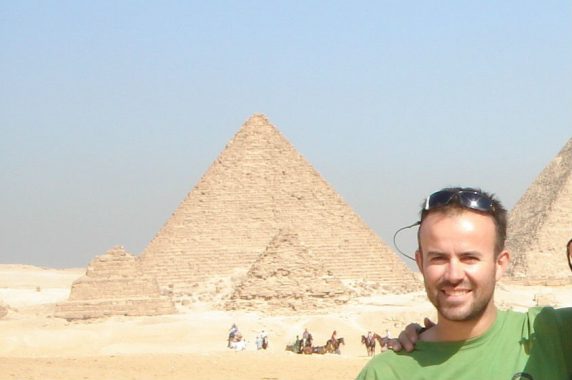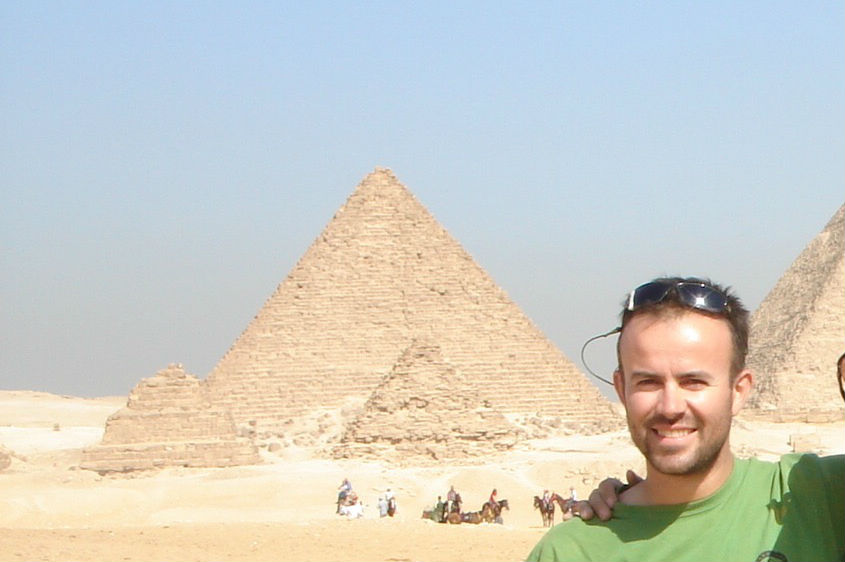A day GP-ing in the desert

Profile: Dr Matt Ladbrook

Dr Matt Ladbrook
Age: 44
Role: GP and Chief medical officer
Location: Sahara desert
05.30
It’s a very early start and I’m fed and watered before first light. I’m in the Sahara desert working as a medic for a company that runs marathons in various deserts. This event involves running a marathon a day, with a double marathon on one day. The five of us in the medical team have the luxury of vehicle transport so we tend not to eat together with the 150 athletes who carry their food with them.
One reality of living and working in the desert is contending with the sand washing facilities and my inevitable critter cohabitants – most wildlife keeps well away, but the cooking areas and tents can attract scorpions and spiders occasionally. It’s worth checking sleeping bags and footwear before using them!
I prepare for my first patients. These tend to be the athletes that have developed problems overnight or those who have existing issues and need reassessing. Not all issues are directly related to racing – there are of course standard general practice issues such as diarrhoea, sunburn, allergies and dehydration. Sometimes we are asked to advise about pre-existing conditions and regular medications as well.
06.00
Before dawn I see my first patient – an athlete complaining about blisters. Advising on and treating blisters accounts for much of the medical team’s time. High daytime floor temperature (up to 50°C), abrasive sand and long distance running all make them a common issue for competitors with 98% of my time spent dealing with the little buggers.
I also advise on a case of diarrhoea and assess a knee injury that was bad the day before – I need to gauge whether or not the athletes have sufficiently recovered to race that day, otherwise I may have to pull them from the race later.
07.00
The first race starts. I’m stationed at a checkpoint, which are spread every 7km or so with the doctors moving through check points on a rolling system.
If treatment is required, we provide it. If an athlete is assessed as unfit to continue, they are stopped and evacuated to camp. It is vital that you as a medic look after yourself throughout the day as you face the same harsh conditions – for example keeping hydrated as the day-time and night-time temperatures can swing by 40-50 degrees.
12.00
As we approach midday an athlete has to be stopped through a checkpoint as he is not doing very well. One of the most common situations we face is when athletes get dehydrated, tired and then the nausea builds – unhelpful, as you can’t hydrate if you feel sick. Without medical help, it’s a vicious cycle that is difficult to break out of.
Dehydration is usually solved with a bit of advice and a review of the patient; however if vomiting persists athletes may need an IV drip with anti-emetic medication. Maintaining adequate electrolyte balance is key and there are times where athletes use either too much or too little electrolyte in their fluids. Most athletes find that diluting their electrolyte drinks to twice the volume recommended by the manufacturer makes a liquid that is more palatable over the duration of the race and less likely to cause indigestion or reflux type symptoms.
14.00
The next athlete I treat is suffering from a heat illness problem. The first thing I want to rule out is heat stroke, which I do by measuring core temperature and assessing cognition. A mentally altered athlete with a core temperature of over 40°C has heat stroke until proven otherwise. Even with optimal treatment, the mortality rate of heat stroke is around 10%, and the management you can offer in the middle of the desert certainly isn’t optimal. I have yet to have to manage a casualty with heat stroke, but deaths from heat stroke in desert and jungle events occur every year. I assess that my patient has heat exhaustion, caused by dehydration and I make sure that cooling, rest and fluids are in place.
15.00
For the remainder of the day I leap frog through the various check points. The fastest athletes complete the marathon in around 5 or 6 hours, whereas the slower athletes can finish in between 8 to 10 hours – as they are out in the sun for twice as long, the heat really takes its toll on them. Added to this, they have less recovery time between races.
16.00
Racing tends to finish at around four, so my next port of call is helping build the camp. Throughout the day we move the camp and then set it up again in the evening, which is when you see your fair share of foot focused ailments as well as other problems that haven’t been picked up that day.
19.00
I round the day off with a briefing with my medical team. The race planning team needs to prepare for tomorrow’s races, and decide where they want the doctors to be.
21.00
If there is any free time, I might sit by the fire with one some of the competitors chatting. Away from the fire, the desert night is cold but the views of the stars are unrivalled. I snatch some sleep but I’m always on call in case of problems.
I was an expedition leader before I was a doctor, the little bit of first aid that I did in the army helped generate an interest in medicine.
I have discovered that working abroad has strengthened my connection with my patients at home. I’m much better able to understand the problems that athletes have and the austere environments they work in. I’ve also become a much more practical person, both in terms of decision making and when I need to perform more manual tasks such as putting on dressings and treating/looking after wounds.
Pulse July survey
Take our July 2025 survey to potentially win £1.000 worth of tokens












